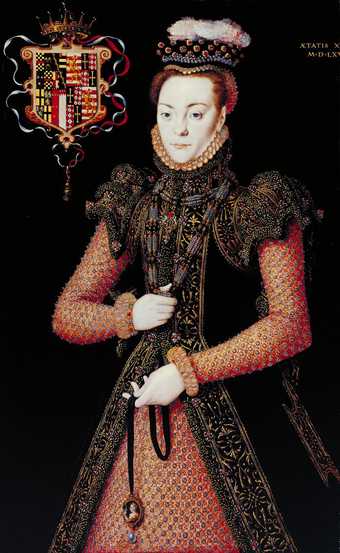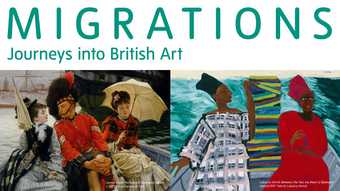Who would choose to base their livelihood on painting portraits of the powerful in an age before cameras lifted the burden of representation from the artist’s shoulders? Imagine the consummate skills of diplomacy and psychology, quite apart from artistry, necessary for such a vocation? The émigré painter Hans Holbein the Younger created a version of Anne of Cleves apparently far more attractive than the woman herself, and thus was directly responsible for Henry VIII’s disappointment on first seeing, in the flesh rather than pigment, the woman he’d agreed to marry. Holbein’s patron Thomas Cromwell was executed for (in part) his role in encouraging the marriage, although the artist’s standing at court was not diminished.

Hans Eworth, Portrait of an Unknown Lady c.1565–8
Tate
Just over twenty years later another émigré painter, Hans Eworth, might have had reason to reflect on the case of Holbein and worry about shifts in power, when his patron Mary I died and was succeeded by a new queen, Elizabeth. Despite the latter’s fraught history with her sister, Eworth thrived. He painted Elizabeth I, as well as the Duke of Norfolk and his wife, numerous courtiers and members of the aristocracy. And it isn’t difficult to see why he was so favoured – his sitters come across as figures of prestige and authority, probably a more useful record for posterity than mere prettiness. Many may now be forgotten, but their noble features and sumptuous clothing tell us they were people who mattered.
Unlike Holbein, who had come to England with letters of introduction from Erasmus and was quickly welcomed into the home of Thomas More, Eworth arrived in London without the backing of influential men of the day. He had been expelled from Antwerp for heresy. He came to England as a refugee, bringing his skills to the country, and within a few years was painting queens and courtiers. What can explain such a dramatic shift in status? The Hollywood version of the story would centre on a man of exceptional talent, the ambitious migrant who dramatically cut through all social structures until he reached the throne itself. But there’s a more interesting story to be told of an entire culture of émigré artists and their position in England in the sixteenth and seventeenth centuries.
Between 1526, when Holbein first travelled to England, and 1632, when Anthony van Dyck settled here, émigré artists, particularly the Flemish, flourished in London, patronised by the powerful. The exiled Eworth came to a city which already contained some of his countrymen working as artists, and, like them, was welcomed because of his painting skills (and, doubtless, those of diplomacy and psychology). Both sides benefited: the English from the presence of talented artists who produced work of quality and influenced home-grown painters, and the visitors from patronage and a new, more appreciative, home.
In the Golden Age of Elizabeth, that period of great cultural activity, an estimated one in ten craftsmen in London was a foreigner. And in time, English artists absorbed the influences of these émigrés whose work became so enmeshed with ideas of the nation itself. There was some initial resistance by local painters to the perceived threat to their livelihood. For example, 200 painters in 1575 signed a petition against foreign artists, but, as numerous scholars have pointed out, it didn’t do much good, as the visitors had the protection of the court.
In the twenty-first century it is hard to think of such a polarisation of opinion without feeling that the world may have turned on its head. Today, most artists living in England would acknowledge the value of new influences and ideas, but those entrenched in power have a different view of émigré, or, as they’re now called, migrant artists.
In July last year, Nicholas Trench, the Earl of Clancarty, himself an artist who has been part of a campaign to reform new and complex visa rules for visiting artists, raised this question in the House of Lords: under what circumstances can an artist who is not a citizen of a European Union member state come to the United Kingdom and work on a self-generated project such as painting pictures or taking photographs without being attached to an official event, an arts organisation in the United Kingdom, or having United Kingdom sponsorship? The answer from the government was unequivocal: there are no specific arrangements within the Immigration Rules for artists to work in the UK without requiring a sponsor.
A new visa category of ‘exceptional talent’ makes room for the non-EU Holbeins, already famed in their native lands, who bring their prestige and ability to Britain with them. But what of the Eworths of the world, the men and women who seek a place of both refuge and artistic possibility where they can rise to prominence, influencing and being influenced by a nation open to artists? They must find another country.

